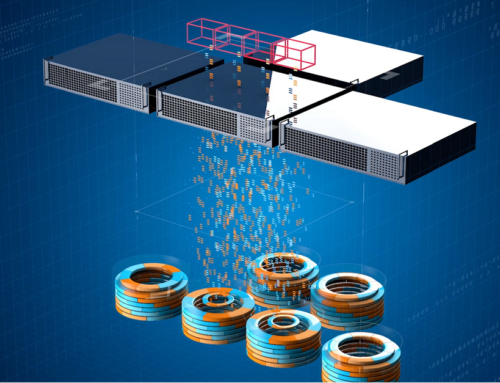In the rapidly evolving realm of IT, the allure of faster storage as a remedy for sluggish application performance is undeniable. But, before you rush to invest in the latest high-speed storage solution, it’s crucial to understand that this approach may not be the panacea we often hope for.
With a myriad of potential hardware solutions for storage I/O performance problems, the burning question on many IT managers’ minds is this: “If I just buy newer, faster storage, won’t that fix my application performance problem?” The succinct answer is: “Maybe Yes (for a while), Quite Possibly No.”
This article aims to shed light on three key issues that significantly impact I/O performance, potentially causing degradation of your applications by 30-50% or more. While there are other factors at play, let’s zoom in on these three critical ones:
1. Non-Application I/O Overhead:
One commonly overlooked performance issue is that a substantial number of I/O operations are NOT generated by your applications. Even if you bolster your system with ample DRAM and transition to an NVMe direct attached storage model to achieve an impressive 80%+ caching rate for your application data, you can’t ignore the fact that numerous I/Os stem from sources other than your application. These non-essential overhead I/Os, often related to managing metadata and system layers, can clog the data path to storage, even with substantial caches in place. In essence, they obstruct and decelerate your application-specific I/Os, hampering responsiveness.
While a full Hyper-Converged, NVMe-based storage infrastructure might seem appealing, it presents its own challenges, including data redundancy and localization.
2. Data Pipelines:
As your data volume skyrockets into the realms of hundreds of terabytes, petabytes, or even exabytes, you must grapple with the reality that a single server box, regardless of its capabilities, can’t house all that data—especially if you’re concerned about hardware and data failures. You have an entire ecosystem of servers, switches, SANs, and more to manage. Data must traverse this intricate network to reach your applications and storage, and introducing cloud storage into the mix only complicates matters further. Eventually, data pipelines themselves become bottlenecks, unable to match the speed of access offered by high-speed storage. When multiple users and applications clamor for data simultaneously, the problem magnifies.
3. File System Overhead:
You didn’t invest in your computer to merely run an operating system; your primary objective is to manipulate data effectively. The application is merely a tool that facilitates this, allowing you and your users to get work done and do a better job. However, sitting between you, your application, and your data is a stack of tools, with the operating system as one of its core components. Operating systems employ file systems to organize raw data into manageable components, creating a hierarchical structure with folders, files, file types, size, location, ownership, and security attributes. Before your data transforms into the masterpiece you envision, numerous operations within the operating and file systems must take place. Ignoring file system overhead while focusing solely on application overhead is akin to ignoring a massive elephant in the room.
Putting It All into Perspective
In the quest to solve application performance woes, the allure of faster storage is undeniable. However, as we’ve explored, it’s not a one-size-fits-all solution. Non-application I/O overhead, data pipeline challenges, and file system complexities can persist even with the latest storage technologies. It’s not about ignoring the potential of faster storage; it’s about recognizing that the broader ecosystem plays a pivotal role in performance optimization.
So, before you embark on a storage upgrade journey, take a holistic approach. Consider the entire data path, from application to storage, and explore solutions that address these multifaceted challenges.
Experience the Difference with DymaxIO
Now, you might be pondering the initial question: “If I just buy newer, faster storage, won’t that fix my application performance?” While it’s true that a shiny new (expensive) storage solution can yield improvements, it won’t address the underlying issues of data pipelines, non-application I/O overhead, and file system overhead. These issues persist, lurking beneath the surface.
At Condusiv, we understand these challenges intimately. We’ve been dedicated to solving storage performance problems across all layers for a considerable period. We’ve witnessed numerous hardware solutions promising to eradicate storage slowness, only to be replaced by newer challenges as technology evolves. As computing speeds surge and storage capacities expand, your demands on these resources will grow exponentially. That’s where we excel—anticipating and resolving issues before they impact your operations.
We invite you to download our free 30-day trial of DymaxIO. Our software is designed to address critical storage performance bottlenecks, ensuring that your users experience even greater improvements, and you appear as the genius IT manager you are.
So, go ahead and explore that shiny new storage option, but remember, we’ll be here to bridge the gaps and make your IT environment truly shine.





Leave A Comment
You must be logged in to post a comment.